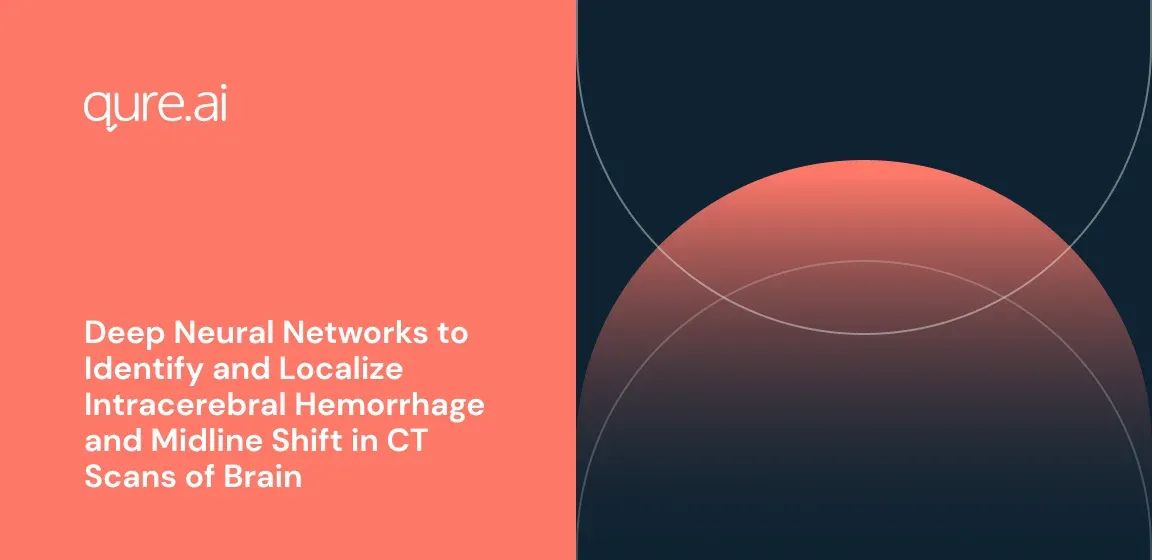Purpose

Back
CT scans of brain are often the frontline investigations in acute conditions of the brain, particularly strokes. Treatment outcomes largely depend on a quick and accurate interpretation of CT scans. A vital feature to illustrate severity of damage is midline shift – indicating high intracerebral (IC) hemorrhage pressure, which can be fatal. Our study aims at designing a deep convolutional network for detection, fast segmentation and quantification of IC hemorrhage, devising an algorithm for midline shift measurement and identification of cerebral hemisphere affected by the detected hemorrhage.
Methods
The anonymized and annotated dataset had 39 CT scans of brain (16 with IC hemorrhage). A deep neural network was trained slice by slice to segment hemorrhage. The network has fully convolutional encoder and decoder with skip connections in between for better localization. 26 scans (589 slices) were used for training and 13 scans (282 slices) for validation. Features extracted from each patient’s complete IC hemorrhage segmentation output were used to train a decision tree for final diagnosis. Ideal midline was drawn using center of mass in bone window and anterior bone protrusion at the level of foramen of Monro. This along with asymmetry in tissue densities gave displaced midline and midline shift. Affected hemisphere was identified using displaced midline and hemorrhage’s center of mass. Accuracy was measured using receiver operating characteristic (ROC) curve and dice score.
Results
100 scans were separately collected over 2 weeks and used for testing. 6 of them had hemorrhage. Sensitivity and specificity for the diagnosis of hemorrhage were 100% and 98.9% respectively. ROC analysis revealed area under curve of 0.994. Model took 3 seconds to segment one CT scan on average. The mean dice score for all test scans was 0.988 while it was 0.80 for the 6 scans with hemorrhage. Midline shift and affected hemisphere were both identified with 100% accuracy.
Conclusion
In this work, we trained a deep convolutional network to detect and quantify IC hemorrhage in brain CT scans. We also measured midline shift and identified the affected hemisphere. The processing pipeline was fully automatic.
Clinical Relevance
Automated detection of hemorrhage and midline shift can help rapidly distinguish between ischemic and hemorrhagic strokes, enabling faster decision-making and treatment.